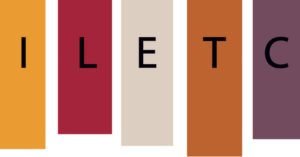Unless the original source is included, summaries have been edited for length from existing summaries and abstracts found in different sources.
Byrnes, H. (2006). Introduction to perspectives. The Modern Language Journal, 90(2), 244–246. https://www.jstor.org/stable/3876873
This special issue is written for college-level language education, and it is aimed to challenge instructional and programmatic issues alike.
Kramsch, C. (2006). From communicative competence to symbolic competence. The Modern Language Journal, 90(2), 249–252. https://www.jstor.org/stable/3876875
Kramsch’s contribution focuses on symbolic competence. She voices a concern about the narrow interpretation of what collegiate foreign language teaching is all about, arguing that “Today it is not sufficient for learners to know how to communicate meanings; they have to understand the practice of meaning making itself.”
Paesani, K. (2018). Researching literacies and textual thinking in collegiate foreign language programs: Reflections and recommendations. Foreign Language Annals, 51(1), 129-139.
This paper tackles the following questions: How can the concepts of literacies and textual thinking be applied to collegiate foreign language programs? Why is a literacies orientation important for reshaping foreign language education in the 21st century?
Rifkin, B. (2006). A ceiling effect for communicative language teaching? The Modern Language Journal, 90(2), 262–264. https://www.jstor.org/stable/3876879
This paper suggests that addressing the lack of program coherence is where the best use of our professional energies toward renewal should be applied. To Rifkin, communicative language use, or proficiency, and intellectually valid engagement with texts and cultures are not inherently in opposition; yet, they seem to be, because, as a field, we have not demanded the creation of extended curricula.
Schulz, R.A. (2006). Reevaluating communicative competence as a major goal in postsecondary language requirement courses. The Modern Language Journal, 90(2), 252–255. https://www.jstor.org/stable/3876876
The paper argues that it is not that communicative competence as a pedagogical practice does not have much to recommend it; it is that it is neither realistic nor sufficient as a goal for collegiate language learning. Accordingly, the author challenges readers to find ways to enable learners to gain deep insights into the differences and similarities in languages and cultures, not by talking about them, but by incorporating these goals into language instruction.
Steinhart, M. M. (2006). Breaching the artificial barrier between communicative competence and content. The Modern Language Journal, 90(2), 258–262. https://www.jstor.org/stable/3876878
This paper proposes that the underlying problem in the teaching and learning of languages at the college level is a separation of what has been called communicative competence and content. The author asks, “Could not the goals of the literature-civilization courses also incorporate those of a language sequence, and likewise, should not the content of language courses engender critical, analytical, and independent thinking?”
Swaffar, J. (2006). Terminology and its discontents: Some caveats about communicative competence. The Modern Language Journal, 90(2), 246–249. https://www.jstor.org/stable/3876874
This paper provides a historical context of developments over approximately three decades and explains how the terminology of communicative competence has become part of the present limitations found in L2 teaching and learning. As the author suggests, a turn toward communicating “intelligently about a culture’s multiple facets” in order to engage our students “in obtaining new knowledge about content and communicating an analysis of how that content operates” might be one way to revitalize the field.
Tucker, H. (2006). Communicative collaboration: Language, literature, and communicative competence redefined. The Modern Language Journal, 90(2), 264–266. https://www.jstor.org/stable/3876880
This paper discusses how, through notions of literacy, there seems to be a remarkable opportunity for bridging our great divides—the one within foreign language departments and the one across the humanities to English departments.
Derewianka, B., & Jones, P. (2016). Teaching language in context (2nd ed.). Melbourne: Oxford University Press.
This book is written with a K-12 audience in mind, but extremely useful for adult and young-adult language teaching and is a great introduction to genre-based language teaching. Of particular importance for those new to the approach are Chapter 1, An Appropriate Model of Language; Chapter 2, The Functions of Language; and Chapter 3, Introduction to the Teaching-Learning Cycle. In this book, you will also find chapters focused on teaching specific genres: story-telling, Chapters 4 and 5; description genres, Chapter 6; explaining genres, Chapter 7; persuasion genres, Chapter 8; responding genres, Chapter 9; and genres for inquiry, Chapter 10.
Kern, R. (2000). Literacy and language teaching. Oxford University Press.
The audience for this book is both language researchers and teachers at all levels of instruction, and contains specific examples from college level language instruction. This book posits that literacy is an organizing principle for foreign language education, and that this is supported by key research findings in cognitive theory, sociolinguistics, discourse analysis, language acquisition, and literacy studies. The book provides an heuristic framework for teaching reading and writing as highly interrelated acts of communication, at all levels of language instruction.
Martin, J.R., & Rose, D. (2008). Genre relations: Mapping culture. London: Equinox.
“This book provides an introduction to genre analysis from the perspective of the ‘Sydney School’ of functional linguistics. Chapter 1 introduces our general orientation to genre from the perspective of system and structure, and places genre within our general model of language and social context. Chapters 2–5 deal with five major families of genres (stories, histories, reports, explanations and procedures), introducing a range of descriptive tools and theoretical developments along the way. Chapter 6 deals with a range of issues arising for genre analysis in a model of this kind.” Equinox
Maxim, H. H. (2006). Integrating textual thinking into the introductory college-level foreign language classroom. The Modern Language Journal, 90, 19–32.
This article is intended for college-level language instructors and curriculum developers. One of the characteristics of the well-documented bifurcation in collegiate foreign language instruction is the transition from lower- to upper-level instruction. Particularly pronounced are the expectations placed on readers at the upper level, who must go from surface readings and sentence-level exercises on everyday situations with clear intent and unambiguous meaning, to supra-sentential and discourse-level processing of texts that contain a significantly higher level of abstraction and ambiguity. Recognizing that preparation for such an approach to reading requires long-term attention, this article explores the pedagogical feasibility of implementing the type of textual thinking and reading practiced at upper levels into beginner-level instruction.
Multiliteracies https://newlearningonline.com/multiliteracies
Multiliteracy pedagogies approaches recognize that the business of communication and representation of meaning today increasingly requires that learners are able to figure out differences in patterns of meaning from one context to another, which are the consequence of any number of factors such as culture, gender, life experience, subject matter, or social or subject domain. Because of the rise of new venues of communication, meaning is made in ways that are increasingly multimodal—in which written modes of meaning interface with oral, visual, audio, gestural, tactile and spatial patterns of meaning. This means that we need to extend the range of literacy pedagogy so that it does not unduly privilege alphabetical representations, but brings into the classroom multimodal representations, particularly those typical of digital media.
Paesani, K. (2018). Researching literacies and textual thinking in collegiate foreign language programs: Reflections and recommendations. Foreign Language Annals, 51(1), 129–139.
This article reflects on the literacy turn in collegiate foreign language (FL) programs, taking as its central argument that the focus in foreign language curriculum, instruction, and research should not be on the content we teach, be it language, literature, or culture, but rather on textual thinking and literacy development.
Rose, D. (2021). Literacy Education and Systemic Functional Linguistics. In S. Conrad, A.J. Hartig, L.Santelmann (Eds.), The Cambridge introduction to applied linguistics, (pp. 115–132). New York: Cambridge University Press.
This chapter outlines an approach to teaching spoken and written language that has been developed over many decades in the research tradition of systemic functional linguistics (SFL), known as genre-based literacy pedagogy. The term genre refers to the ways that texts vary according to their social purposes. The chapter starts with the SFL model of text-in-context. It then introduces analyses of two sets of genres found in educational curricula: “knowledge genres” (such as stories, explanations, procedures, arguments) and “curriculum genres” (genres of classroom teaching and learning). Genre pedagogy is then exemplified with extracts from a science literacy lesson.
Troyan, F.J. (2020). Genres in contextualized world language assessment and learning. In F.J. Troyan (Ed.), Genre in world language education (pp. 3–31). New York and London: Routledge. https://doi.org/10.4324/9780429321009
This book is intended for future and current L2 and heritage language teachers and instructors at all levels of instruction. In line with ACTFL and CEFR standards, and following a theoretically-informed instructional framework, this volume brings together scholarship on contextualized, task-based performance assessment and instruction with a genre theory and pedagogy to walk through the steps of designing and implementing effective genre-based instruction.
Zapata, G.C. (2022). Learning by design and second language teaching: Theory, research, and practice. New York and London: Routledge. https://doi.org/10.4324/9781003106258
A comprehensive introductory chapter presents the theoretical tenets of the multiliteracies approach and is followed by four chapters devoted to the establishment of connections between the framework and L2 instruction, information on evidence-based pedagogical practices and suggestions for their implementation, and task examples that can be adapted for use in a variety of educational contexts. https://www.routledge.com/Learning-by-Design-and-Second-Language-Teaching-Theory-Research-and-Practice/Zapata/p/book/9780367617332
Discourse community: groups of speakers (readers, writers, signers, etc.) who share interests, and/or values, and/or experiences, and/or ideals, etc. such as sporting groups, theatre aficionados, book clubs, friends, and family. In this sense, larger units like national ones, are also discourse communities. (Adapted from Derewianka & Jones, 2016, page 7)
Genre: Goal-oriented social practices that have evolved in our culture to enable us to get things done.” Derewianka, & Jones, 2016, page 7.
Guiding questions: Socratic questions an instructor asks in order to help learners discover features in a text.
Language (according to Systemic Functional Linguistics): a meaning-making system through which users interactively shape and interpret their world and themselves. (Adapted from Derewianka & Jones, 2016, page 3)
Literacy: “The use of socially-, historically-, and culturally-situated practices of creating and interpreting meaning through texts. It entails at least a tacit awareness of the relationships between textual conventions and their contexts of use, and ideally, the ability to reflect critically on these relationships. Because it is purpose-sensitive, literacy is dynamic—not static—and variable across and within discourse communities and cultures. It draws on a wide range of cognitive abilities, on knowledge of written and spoken language, on knowledge of genres, and on cultural knowledge.” Kern, R. (2000)., p. 16.
Text: Any form of human communication in any modality (spoken, written, signed, visual, etc.) or combination of modalities.
Textual features: Any resource used by the creator of the text that results in a particular effect. Most typical textual features taught in a language classroom are “lexico-grammatical,” a term coined by Michael Halliday, the father of Systemic Functional Linguistics (SFL), to describe the continuity between grammar and lexis (vocabulary) emphasizing that vocabulary and grammatical structures are interdependent.

This entry is licensed under a Creative Commons Attribution-NonCommercial-ShareAlike 4.0 International license.




